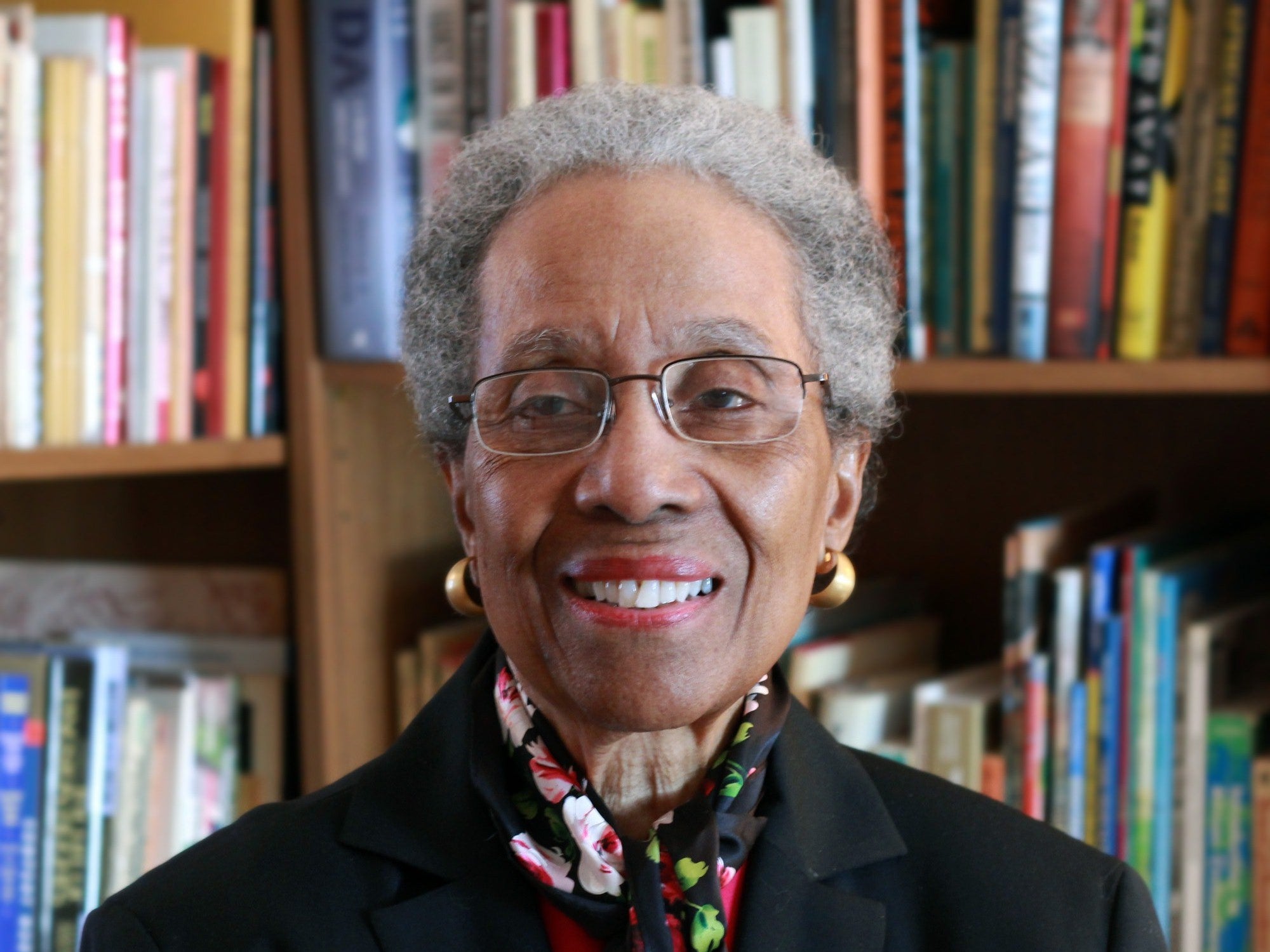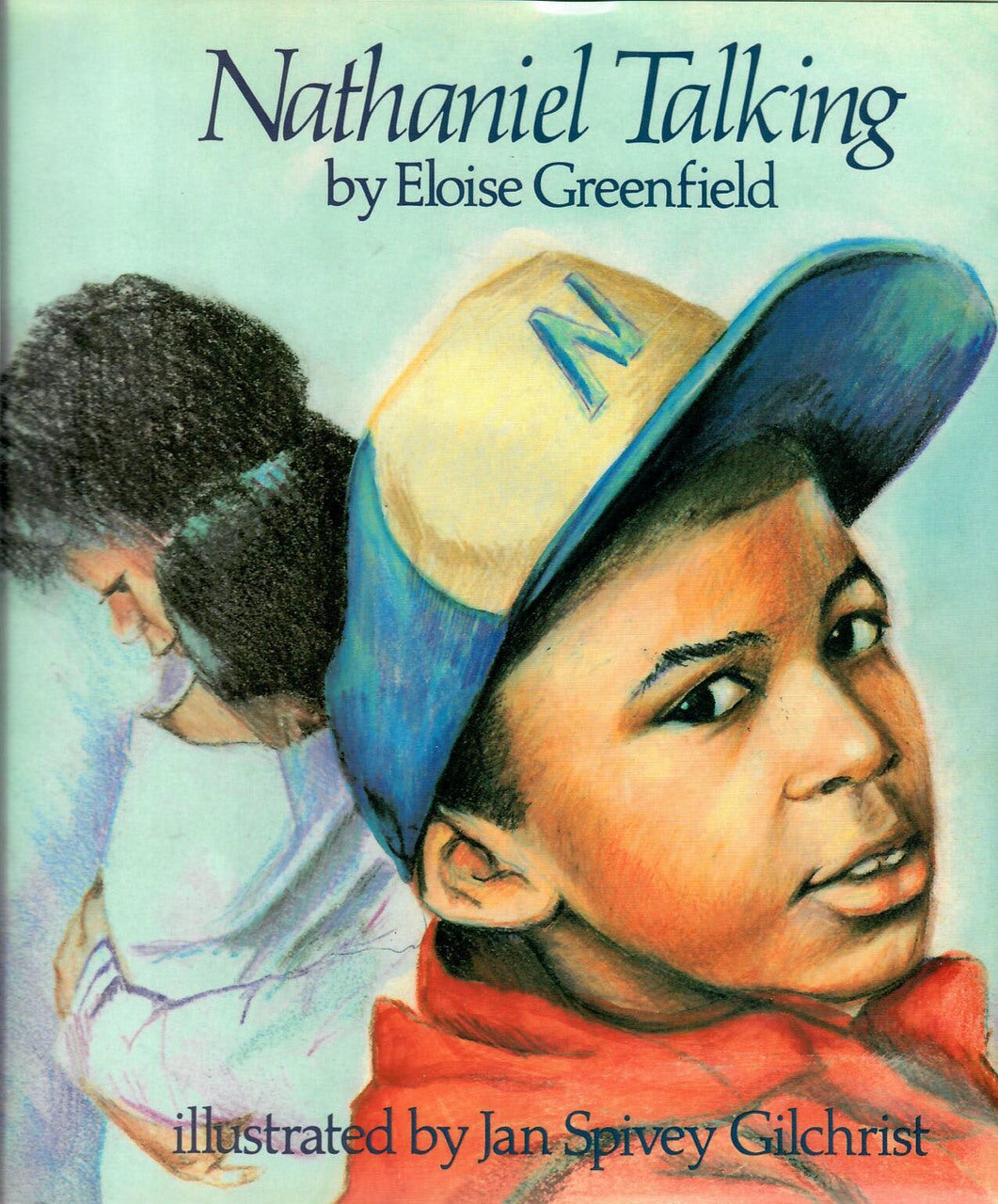Eloise Greenfield: Author who wrote books to inspire black children
The writer used her talent to challenge racism in the publishing industry, which, at the time, would depict African American children using racist imagery and stereotypes

Eloise Greenfield, an award-winning writer whose dozens of works helped broaden children’s literature so that young African Americans could see themselves, their history and their hopes in the pages of their picture books, has died aged 92.
Greenfield spent nearly her entire life in Washington, where as a child she would lose herself within the stacks of the public library and where she began writing books of her own during her downtime as a clerk at the US Patent Office in the 1960s.
A mother of two, she set out on a mission to help rectify the deficiencies of the literary canon for children, in which African Americans were often invisible or demeaned with racist imagery and stereotypes.
“I wanted my books to enable black children to realise how beautiful and smart they are,” Greenfield once told The Washington Informer. “I wanted to write books that inspired and uplifted them, that made them laugh and be happy.”
Over half a century, Greenfield wrote more than 40 picture books, novels, biographies and poetry collections. In 2018, the American Library Association honoured her with the Coretta Scott King-Virginia Hamilton Award for Lifetime Achievement, recognising her as “a trailblazer whose extraordinary books of poetry and prose have influenced many and continue to resonate with children today”.
The first full-colour mainstream picture book featuring an African-American child is generally believed to be the Caldecott Medal-winning volume The Snowy Day (1962), written and illustrated by Ezra Jack Keats, who was white. After enduring rejection after rejection, Greenfield debuted as a book author 10 years later with Bubbles, the story of a young black child as he learns to read.
Bubbles, a picture book with illustrations by Eric Marlow, was released in 1972 by Drum and Spear Press, a Washington publishing house founded by former civil rights activists of the Student Nonviolent Coordinating Committee. Other publishing houses, Greenfield said, had dismissed her submissions with the oblique explanation that, “this is not quite what we want”.
“During the period in which black writers were being rejected, some editors denied race was a factor in these rejections,” she told The Washington Post in 1991. “They claimed they weren’t receiving any well-written manuscripts.”
In time, Greenfield became so popular that she was able to abandon her government day job and devote herself full-time to writing. At one point, she had at least 10 volumes in print at HarperCollins Children’s Books, a rarity in the notoriously competitive publishing industry.
Greenfield argued that children’s literature must not cower before the dangers and sorrows children face in real life. In her book Grandmama’s Joy (1980), illustrated by Carole Byard, an orphaned girl consoles her despairing grandmother, who can no longer afford the rent at the home they share. Night on Neighbourhood Street (1991), a poetry collection illustrated by Jan Spivey Gilchrist, included a verse titled “The Seller”, about children who “see behind” the “easy smile” of a drug dealer and run into their homes, where they find “warmth/and life”.
But the overriding themes of her work were hopeful. “I feel the body of literature should reflect us the way we are,” Greenfield said. “When we say realism, many people think automatically of the negative side, and the joy is just as realistic as the pain.”
In Nathaniel Talking (1988), illustrated by Gilchrist, Greenfield introduced readers to the lyrical wisdom of nine-year-old Nathaniel B Free, who philosophises in the cadence of rap: “It’s Nathaniel talking/and Nathaniel’s me/I’m talking about/my philosophy/About the things I do/And the people I see/All told in the words/Of Nathaniel B Free.”
In Africa Dream (1977), illustrated by Byard, Greenfield took readers on what a Post reviewer described as, “a magic-carpet-ride for the kindergarten set, a trip to Africa not to be missed”. Another noted poetry volume was Honey, I Love (1978), first illustrated by the award-winning artists Diane and Leo Dillon.

Greenfield said she sought to give children a sense of history in works such as Childtimes: A Three-Generation Memoir (1979), which she co-authored with her mother, Lessie Jones Little, and in volumes including The Great Migration: Journey to the North (2011) and The Women Who Caught the Babies: A Story of African American Midwives (2019). She penned biographies of celebrated African Americans including civil rights activist Rosa Parks, educator and women’s rights advocate Mary McLeod Bethune, entertainer Paul Robeson and basketball star Michael Jordan.
“It is necessary for black children to have a true knowledge of their past and present,” she once said, “in order that they may develop an informed sense of direction for their future”.
Eloise Glynn Little was born in Parmele, North Carolina, on 17 May, 1929. She was an infant when her family moved to Washington, where her mother and father worked for the government. She grew up in the Langston Terrace housing project, studying piano and absorbing a love of literature from her parents, and graduated from Cardozo High School in 1946.
Greenfield escaped the tedium of her job at the patent office with her writing. Her first publication, a poem, appeared in the Hartford Times of Connecticut in 1962. After trying and failing to find a publisher for her stories, “I decided that I didn’t have that talent and I would think of something else to do,” she said. Eventually, she added, “I learned that rejections are to be expected”.
Her marriage to Robert Greenfield ended in separation. Besides their daughter, survivors include a son, two sisters, a brother, four grandchildren and four great-grandchildren.
Greenfield said she often worked on her manuscripts through the night and into the early hours of the morning, allowing herself to be transported back to her childhood as she created the characters of her books and verse.
The poem “Keepsake”, published in Honey, I Love, was drawn from her memory of the death of a beloved neighbour. When Greenfield and her mother called on his widow to pay their respects, the woman handed a coin to Greenfield. It was a gift, the woman said, that her husband had asked her to deliver after his death.
“When I think about that now, I think about her, in her grief, trying to comfort a child,” Greenfield remarked to the Kansas City Star. “She told me he had left that penny for me.”
In real life, Greenfield, who was only about four years old, could not resist spending the money. But when she recollected the event in her poetry, she conjured a girl who declares that she will forever keep that coin, a bequest of love from one generation to another.
Eloise Greenfield, poet and children’s book author, born 17 May 1929, died 5 August 2021
© The Washington Post

